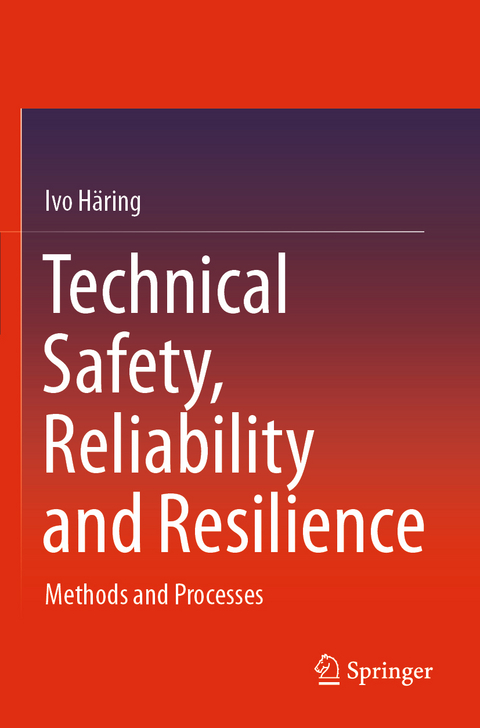
Technical Safety, Reliability and Resilience
Springer Verlag, Singapore
978-981-334-274-3 (ISBN)
This book provides basics and selected advanced insights on how to generate reliability, safety and resilience within (socio) technical system developments. The focus is on working definitions, fundamental development processes, safety development processes and analytical methods on how to support such schemes. The method families of Hazard Analyses, Failure Modes and Effects Analysis and Fault Tree Analysis are explained in detail. Further main topics include semiformal graphical system modelling, requirements types, hazard log, reliability prediction standards, techniques and measures for reliable hardware and software with respect to systematic and statistical errors, and combination options of methods. The book is based on methods as applied during numerous applied research and development projects and the support and auditing of such projects, including highly safety-critical automated and autonomous systems. Numerous questions and answers challenge students and practitioners.
Ivo Häring received a PhD in physics at the Max-Planck-Institute for Complex Systems (MPIPKS) from the Technical University Dresden (TUD). Since 2004 he works at the Fraunhofer Ernst-Mach-Institut, EMI, Germany, in various roles including deputy head of the department Safety Technologies and Protective Structures, head of the research groups Technical Safety, Hazard and Risk Analysis, Resilience Engineering, and Senior Scientist. Areas of interest are qualitative and quantitative risk and resilience analysis, engineering, management and optimization; system modelling, analysis, engineering and numerical simulation; technical reliability and safety analysis of multi-domain systems including software and networks; automated, autonomous and self-learning systems; and software application and 3D expert tool development. In these areas he contributed to scientific work programs, set-up, execution and dissemination of multiple national and EU funded research projects, in particular with the aims of risk control, (functional) safety, susceptibility and vulnerability reduction as well as resilience enhancement. The results have been documented in many (conference) articles and used for lectures within safety and security, risk and sustainability engineering master degree programs and continuous academic courses, in particular at the University of Freiburg, Institute for Sustainable Systems Engineering (INATECH), Hochschule Furtwangen University (HFU), Baden-Wuerttemberg State University Loerrach (DHBW) and Fraunhofer Academy. He is member of the editorial board of the European Journal for Security Research (EJSR).
1. Introduction and objectives.- 2. Technical safety and reliability methods for resilience engineering.- 3. Basic technical safety terms and definitions.- 4. Introduction to system modelling for system analysis.- 5. Introduction to system analysis methods.- 6. Fault Tree Analysis.- 7. Failure Modes and Effects Analysis. 8. Hazard analysis.- 9. Reliability prediction.- 10. Models for hardware and software development processes.- 11. The standard IEC 61508 and its Safety Life Cycle.- 12. Requirements for safety-critical systems.- 13. Semi-formal modeling of multi-technological systems I: UML.- 14. Semi-formal modeling of multi-technological systems II: SysML beyond the Requirements Diagram.- 15. Combination of system analysis methods.- 16. Error detecting and correcting codes
| Erscheinungsdatum | 18.02.2022 |
|---|---|
| Zusatzinfo | 29 Illustrations, color; 88 Illustrations, black and white; XXXVI, 308 p. 117 illus., 29 illus. in color. |
| Verlagsort | Singapore |
| Sprache | englisch |
| Maße | 155 x 235 mm |
| Themenwelt | Informatik ► Netzwerke ► Sicherheit / Firewall |
| Technik ► Bauwesen | |
| Wirtschaft ► Betriebswirtschaft / Management ► Unternehmensführung / Management | |
| Schlagworte | Failure Modes and Effects Analysis (FMEA) • failure rate • Failure Space • Fault Tree Analysis • Five-Step Risk Management • hazard analysis • Reliability prediction • Resilience Engineering • Safety Boundaries • Safety Life Cycle • Waterfall Model |
| ISBN-10 | 981-334-274-9 / 9813342749 |
| ISBN-13 | 978-981-334-274-3 / 9789813342743 |
| Zustand | Neuware |
| Haben Sie eine Frage zum Produkt? |
aus dem Bereich


